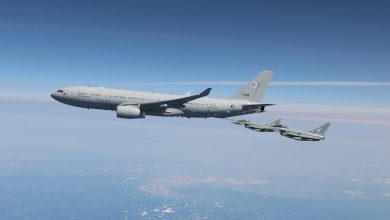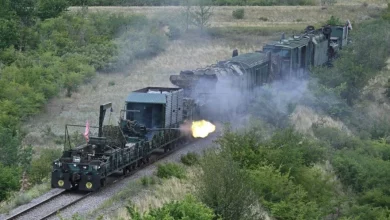Researchers model and test ground conditions on the moon

From 1967 to 1972, the American space agency NASA conducted a series of space missions to the moon. Nearly 400 kilograms of soil samples were transported back to Earth.
NGI—The Norwegian Geotechnical Institute is now using CT-scans of 10,000 lunar particles from the Apollo expeditions to study how lunar soils will behave when humans start engineering structures for the lunar surface.
In the near future, NASA’s Artemis missions plan to send humans to the moon again for the first time in 50 years. This time, astronauts will potentially work and live on the moon for extended periods. But how to build a habitable base on the moon? What forces can the ground on the moon withstand? And with the conditions that are on the moon, how do materials, like a grain of lunar soil, behave?
“Selenotechnics, a parallel to geotechnics here on Earth, is the study of how lunar soils, also called regolith, behave. Understanding the fundamental behavior of the lunar soils like their strength and grain shape is critical for obtaining realistic and correct knowledge about the ground conditions on the moon. At NGI, we are now creating an updated knowledge base on the fundamental properties of lunar soils,” says Dylan Mikesell, a senior geophysicist and principal investigator.
The updated knowledge base that NGI is now developing on the lunar material properties will be important in the preparation for future space missions and for actors who will build infrastructure or deliver equipment—such as a robotic rover.
Moon dust and extreme temperatures
When Neil Armstrong took humanity’s first steps on the moon on July 21, 1969, he knew very little about what would greet him and the others on the Apollo 11 mission. As he stepped out of the spacecraft, he found a landscape covered in what is called regolith. This lunar soil, which is a mixture of dust, larger particles, and fragments, can be up to 10 meters thick. On the moon, there is no atmosphere, and very low gravity compared to Earth. And what little water is present, is contained in the form of ice—frozen between these soil particles.
Without wind and water in motion, nothing grinds down the sharp edges of geological materials, as on Earth. On the moon, therefore, a grain of lunar soil can be razor sharp and can be dangerous to equipment such as space suits. Add to this the fact that the temperature differences on the moon are extreme and can range from minus 130° to over 120° Celsius. Solar radiation can be over 200 times higher than on the Earth’s surface, and particles in the atmosphere rain down over the landscape because the moon, unlike Earth, does not have a protective magnetic field.
Another example that illustrates how the ground on the moon differs from the Earth is how the static electricity on the moon helps to hold two grains of soil together. Here on Earth, water has the dominant role in particle cohesion. That difference affects the strength of the clump of soil.
Mimicking conditions on the moon
“After all, we can’t travel to the moon to work as lunar geotechnical engineers. At NGI, however, we have advanced testing methods for ground conditions on Earth. We use these as a starting point when analyzing the ground conditions on the moon,” says Luke Griffiths, a senior researcher at NGI.
10,000 particles from the Apollo expeditions have been CT scanned and the data sent to NGI. Here, the lunar particles are extracted from the CT scans and are used to build a catalog of 3D grains. Computer simulation models can then be calibrated with NGI’s lab tests for Earth. But how to recreate the special conditions on the moon—such as reduced gravity—so that material properties can be determined and tested?
“By pushing the instruments as low as possible in our laboratory, we are able to mimic the conditions that are on the moon five meters underground. However, we are unable to push the instruments so low that we can mimic the moon’s surface. Then the instruments come to a halt. This knowledge gap must therefore be modeled using computer simulation. It is the only way until we start conducting experiments on the moon,” says Alex X. Jerves, a postdoctoral researcher at NGI.
The distance from Earth to the moon is 384,400 kilometers. If humans are to live and work on the moon for extended periods, it will not be possible to transport all vital resources, such as water and energy, from the Earth to the moon.
Knowledge about the resources found on the moon, and how these can best be utilized, is therefore important—so-called In Situ Resource Utilization, or ISRU. For example, how will the sun be utilized as an energy source on the moon? What knowledge do we have about the landscape of the moon and the metals and minerals contained in the regolith, mountains, and rock? Where do we need more knowledge to make use of the moon’s resources? And to what extent can Norwegian expertise contribute to solving these challenges?
“In its strategy towards 2030, the European Space Agency calls for European knowledge communities and industry to take a leading role in developing important ISRU technology. On behalf of the Norwegian Space Agency, NGI has mapped the expertise within ISRU that Norwegian actors can contribute to and further develop—both in research and development, and commercially,” says Sean Salazar, senior researcher at NGI.
The study concluded that Norway has extensive experience in collecting, processing, and storing natural resources from the energy and mining industries, combined with specialized contributions in several technological areas—from exploration sensors to energy reactor developments to satellite launches.
“Norway is in an excellent position to contribute to future developments in how to maximize the moon’s resources,” says Salazar.





